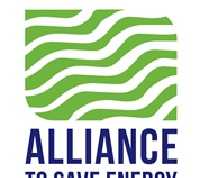SBIC Recognizes 2016 Beyond Green™ Award Winners
Washington, DC – (RealEstateRama) — The National Institute of Building Sciences Sustainable Buildings Industry Council (SBIC) recognized the 2016 Beyond Green™ High-Performance Building and Community Awards winners on Thursday, January 12, 2017, at the Beyond Green™ Awards Luncheon, sponsored by Tally® and held during Building Innovation 2017: The National Institute of Building Sciences Fifth Annual Conference and Expo in Washington, D.C.
The Honor Award, the top prize in the High-Performance Buildings Category, went to the Chesapeake Bay Foundation’s Brock Environmental Center in Virginia Beach for the Foundation’s sustainable project.

(Representing the Chesapeake Bay Foundation’s Brock Environmental Center in Virginia Beach, from left, Mary Tod Winchester of the Chesapeake Bay Foundation and Greg Mella from SmithGroupJJR accept the Beyond Green™ Honor Award in the High-Performance Buildings Category from National Institute of Building Sciences President Henry L. Green.)
“The Brock Center is an exceptional project, worthy of the First Place Award, said Teresa Rainey, Beyond Green juror and director of high performance design at EYP. “The team members worked collaboratively to bring together multiple strategies to achieve goals beyond those seen in typical projects. They’ve embraced the mission of the organization and the desire to implement solutions that can be replicated in future projects.”
The Center serves as the hub for the Chesapeake Bay Foundation’s (CBF) Hampton Roads office and supports its education, outreach, advocacy and restoration initiatives.
“This is a real honor,” said Mary Tod Winchester, vice president of administration at the Foundation. “We bring people to the Bay to understand what’s going on. We built our first education center in 1972…we began to really practice what we preach…in 1973, we put in our first composting toilet.”
In addition to offices for CBF and partner groups, the Center provides meeting rooms and an 80-seat conference room designed to express CBF’s mission of collaboration to protect the Chesapeake Bay. In keeping with the ecology of the site and the mission of the Foundation, the owner and design team strove to protect, preserve and celebrate this setting, creating a design of its place, while simultaneously showcasing technologies that contribute to net-zero energy, water and waste. The team strove to achieve LEED Platinum and meet the requirements of the Living Building Challenge.
“It is the first certified net-zero water property in the world,” said Greg Mella from SmithGroupJJR . “We hope this is a huge precedent for a lot of other properties to achieve net-zero water. On behalf of the entire team…that made the Brock Center…we are very appreciative of this recognition.”
The 2016 Beyond Green™ Award Jury also recognized three recipients with Merit Awards.
The Award of Merit in Innovations for High-Performance Buildings and Communities went to VaproShield for its innovative building enclosure products.
(VaproShield’s Dan Clancy, left, accepts the Award of Merit in Innovations for High-Performance Buildings and Communities from National Institute of Building Sciences President Henry L. Green.)
“In today’s marketplace, manufacturers need to address multiple industry challenges, said Beyond Green juror David Underwood, ASHRAE past president and founder of Isotherm Engineering Ltd. “VaproShield identified a need to deliver high-performance building enclosures while addressing challenges with the availability of a skilled technical workforce, providing a safe work environment and meeting green building program requirements. Their approach to facilitate achievement of high-performance buildings led to us recognizing them with an Award of Merit for High-Performance Innovations.”
VaproShield manufactures vapor-permeable, water-resistive barriers and air-barrier membranes and accessories. The system eliminates the need for any joint/corner treatments, tapes, adhesives and spray equipment and contains no VOCs—allowing it to earn a Declare label from the International Living Future Institute. The VaproShield System has very few weather restrictions and can be installed in below-freezing temperatures and immediately following or before rain events. (In fact, the product was used on the Brock Center, winner of the Honor Award.)
“We are honored and very proud to receive this award,” said Dan Clancy, regional manager, east, at VaproShield. “Having a continuous air barrier is essential…We like to think we’ve simplified it.”
The Award of Merit in the category of High-Performance Initiatives went to the Sustainable Design Program for the U.S. Department of Veterans Affairs (VA) for its work to integrate sustainability into VA’s design and construction programs.
“The VA’s Sustainable Design Criteria provides a replicable approach that building owners can use to implement high-performance requirements across their portfolio, said Beyond Green juror Illya Azaroff, founding principal at PLUS LAB Architect and an associate professor at the New York City College of Technology (CUNY). “Of particular importance was the inclusion of metrics to monitor progress and verify achievement of high-level goals.”
The Sustainable Design Program achieved this through its Sustainable Design Manual, several master construction specification sections, participation in VA’s design review program and active involvement in the development of VA’s design and construction standards. VA’s focus on sustainable facility design and construction took hold in 2006 when VA became one of the original signatories of the Federal Leadership in High Performance and Sustainable Buildings Memorandum of Understanding. Through VA’s focus on sustainability the agency has achieved significant progress, including having a quarter of its hospitals achieve an ENERGY STAR certification and reducing water consumption by over 30 percent since 2007. The program has set even loftier goals moving into the future.
The final Award of Merit went to the team responsible for the renovation of the Renwick Gallery of the Smithsonian American Art Museum. This project preserved and protected the historic character of the first purpose-built art museum in America while modernizing its infrastructure to be secure, efficient and cost-effective.
(On behalf of the team responsible for the renovation of the Renwick Gallery of the Smithsonian American Art Museum, Roger Chang of the DLR Group | Westlake Reed Leskosky, left, accepts the Award of Merit from National Institute of Building Sciences President Henry L. Green.)
“An historic building like the Renwick Gallery presents significant challenges for a design and construction team charged with renovating a museum to modern standards,” said Beyond Green juror David Underwood. “The project team rose to the challenge, utilizing innovative techniques to provide a high-performance building into the future.”
The building was constructed in 1859, slated for demolition in the 1960s, saved by First Lady Jackie Kennedy and last renovated between 1967 and 1972. The team undertook an integrative design process that utilized laser scanning, building information modeling (BIM) and historical documents to implement effective strategies for this renovation.
“Sometime projects like this only come up once in a lifetime,” said Roger Chang, principal at DLR Group | Westlake Reed Leskosky, upon accepting the award.” We’ve seen a 50-percent reduction in energy use from the pre-renovation values.”
During the Beyond Green™ Awards Luncheon, the recipients in attendance each gave slide presentations highlighting their award-winning topics. The winners will be featured as case studies on the WBDG Whole Building Design Guide®. The Call for Entries for the 2017 Beyond Green™ High-Performance Building and Community Awards will be available in the spring of 2017.
Visit the WBDG Whole Building Design Guide® to peruse case studies of Beyond Green™ winners from previous years.
















